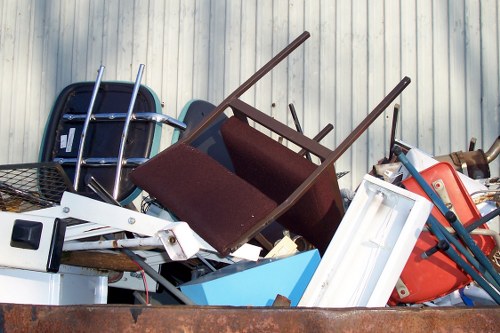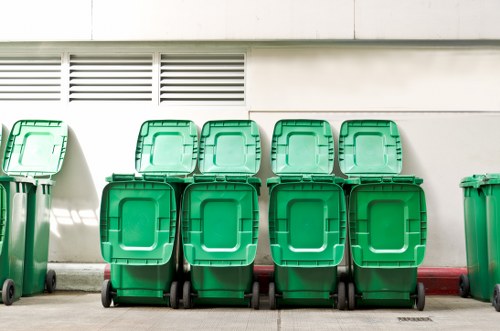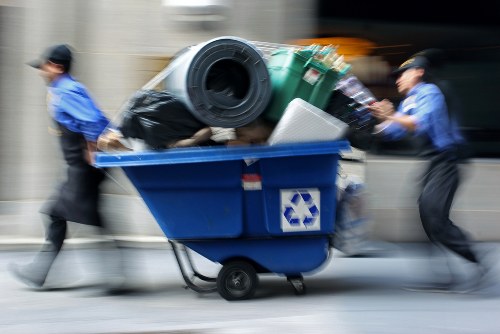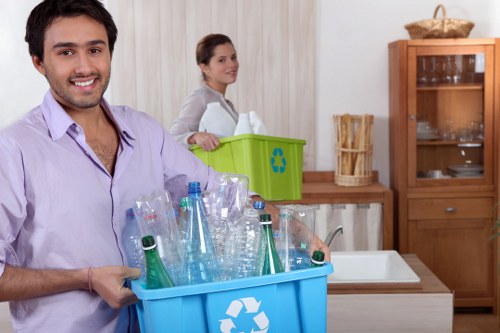Builders Waste Removal in Staines

Embarking on a construction project in Staines? Whether you’re renovating your home, building an extension, or managing a large-scale construction site, effective builders waste removal is crucial. Proper waste management not only ensures a clean and safe working environment but also complies with local regulations.
Builders waste can include a variety of materials such as concrete, bricks, tiles, wood, metals, and packaging materials. Handling these materials responsibly minimizes the environmental impact and promotes sustainable construction practices.
Choosing the right waste removal service in Staines can make a significant difference in the efficiency and success of your project. Let’s explore the key aspects of builders waste removal and how to select the best service provider for your needs.
Understanding Builders Waste

Builders waste encompasses all the debris generated during construction, renovation, and demolition activities. This can range from bulky items like timber and concrete to smaller pieces like nails and screws.
Proper classification and disposal of builders waste are essential to ensure that recyclable materials are appropriately handled and non-recyclable waste is disposed of in compliance with environmental regulations.
In Staines, local councils have specific guidelines for waste disposal. Familiarizing yourself with these regulations helps in planning your waste removal strategy effectively.
Types of Builders Waste

Builders waste can be categorized into several types, each requiring different handling and disposal methods:
- Concrete and Masonry: Waste from concrete cutting, bricks, and blocks.
- Timber and Wood: Offcuts from framing, decking, and plywood.
- Metals: Scrap from steel, aluminum, and copper.
- Plastics and Packaging: Materials like plastic sheeting, packaging foam, and bags.
- Hazardous Waste: Paints, solvents, and other chemicals that require special handling.
Understanding these categories helps in selecting a waste removal service that can handle each type appropriately.
Benefits of Professional Waste Removal

Hiring a professional builders waste removal service in Staines offers numerous advantages:
- Time Efficiency: Professionals can quickly and efficiently remove waste, allowing your project to stay on schedule.
- Compliance: Ensures that waste disposal complies with local regulations and environmental standards.
- Safety: Proper handling of heavy and hazardous materials reduces the risk of accidents on site.
- Environmental Responsibility: Professional services often focus on recycling and proper disposal, minimizing environmental impact.
- Cost-Effective: Prevents potential fines from improper disposal and reduces the need for additional labor on-site.
These benefits highlight the importance of integrating waste removal services into your construction plan.
Choosing the Right Waste Removal Service

Selecting a reliable waste removal service in Staines involves several considerations:
- Experience and Reputation: Look for companies with proven track records and positive reviews.
- Range of Services: Ensure the service covers all types of builders waste you generate.
- Compliance: Verify that the company adheres to local regulations and environmental guidelines.
- Pricing: Compare quotes to find a service that offers good value for money without compromising quality.
- Flexibility: Choose a provider that can accommodate your schedule and project timelines.
Taking the time to evaluate these factors ensures you partner with a service that meets your specific needs.
Environmental Considerations
Environmental sustainability is a growing concern in the construction industry. Effective waste removal plays a pivotal role in reducing the carbon footprint of your projects in Staines.
Implementing recycling practices and opting for waste removal services that prioritize sustainable methods contribute to the conservation of resources and reduction of landfill waste.
By choosing eco-friendly waste removal options, you not only comply with regulations but also enhance your project's reputation for environmental responsibility.
Cost Factors
The cost of builders waste removal in Staines can vary based on several factors:
- Volume of Waste: Larger projects generate more waste, increasing disposal costs.
- Type of Materials: Hazardous or bulky materials may incur additional fees.
- Frequency of Service: Regular waste removal can be more cost-effective for ongoing projects.
- Service Provider: Different companies offer varying pricing structures and packages.
Understanding these cost factors helps in budgeting appropriately and selecting a service that aligns with your financial considerations.
Logistics and Scheduling
Effective waste removal requires careful planning of logistics and scheduling. Coordinating pickup times with your construction schedule ensures minimal disruption to your project.
Considerations include the size and accessibility of your site, the availability of parking for waste collection vehicles, and the timing of waste removal to coincide with peak construction activity.
Partnering with a waste removal service that offers flexible scheduling can streamline the process and enhance overall project efficiency.
Regulatory Compliance
Compliance with local waste disposal regulations is mandatory in Staines. Failure to adhere to these regulations can result in hefty fines and project delays.
A professional waste removal service stays updated with current laws and ensures that all waste is disposed of in accordance with regional guidelines.
This compliance protects your project from legal issues and promotes responsible waste management practices.
Recycling and Reuse
Recycling and reusing materials not only benefit the environment but also reduce disposal costs. Many waste removal services in Staines offer recycling options for materials like wood, metal, and concrete.
Incorporating recycling into your waste management strategy contributes to resource conservation and supports sustainable construction practices.
Encouraging the reuse of materials where possible further extends the lifecycle of resources and minimizes waste production.
Safety Considerations
Handling builders waste without proper training and equipment can lead to accidents and injuries on your construction site.
Professional waste removal services are equipped with the necessary tools and expertise to manage waste safely, reducing the risk of workplace accidents.
Ensuring that waste is handled correctly also protects your workforce and maintains a safe working environment.
Impact on Project Timelines
Efficient waste removal is essential for maintaining project timelines. Accumulated waste can hinder construction progress and create bottlenecks.
Regular and prompt waste removal ensures that your site remains organized and free of obstacles, facilitating smooth and uninterrupted workflow.
By integrating waste management into your project schedule, you can avoid delays and keep your construction timeline on track.
Innovative Waste Management Solutions
The waste management industry is evolving with the introduction of innovative solutions that enhance efficiency and sustainability.
Technologies such as waste tracking systems and automated sorting processes improve the precision and effectiveness of waste removal services.
Staying informed about these advancements allows you to adopt modern practices that benefit your construction projects.
Local Waste Removal Providers in Staines
Staines is home to several reputable builders waste removal providers, each offering unique services tailored to various project needs.
When selecting a provider, consider factors such as their service range, reputation, and commitment to sustainability.
Engaging with local experts ensures that you receive personalized service that understands the specific requirements of construction projects in Staines.
Preparing for Waste Removal
Proper preparation for waste removal enhances the efficiency of the process. Organize your waste by type and size to facilitate easy handling and disposal.
Implement labeling systems for hazardous materials and ensure that waste is easily accessible for pickup.
Clear communication with your waste removal service regarding your expectations and requirements ensures a seamless process.
Cost-Saving Tips
Effective waste management can lead to significant cost savings on your construction project.
Implementing recycling practices reduces the volume of waste requiring disposal, thereby lowering costs. Additionally, scheduling waste removal during off-peak times can secure better rates from service providers.
Optimizing waste management strategies not only benefits your budget but also promotes environmentally responsible practices.
Case Studies
Examining real-life examples of successful builders waste removal can provide valuable insights and best practices.
Case studies from local Staines projects demonstrate the effectiveness of partnering with professional waste removal services and adopting sustainable practices.
Learning from these examples can guide your waste management strategies and enhance project outcomes.
Future Trends in Waste Removal
The waste management industry is continuously evolving with new trends aimed at improving efficiency and sustainability.
Emerging trends include increased automation, advanced recycling technologies, and greater emphasis on circular economy principles.
Staying abreast of these trends can help you incorporate innovative practices into your waste management strategy, ensuring long-term success and environmental stewardship.
Conclusion
Effective builders waste removal in Staines is a critical component of any construction project. By understanding the types of waste, the benefits of professional services, and the importance of compliance and sustainability, you can ensure a smooth and successful project.
Selecting the right waste removal partner, planning meticulously, and embracing innovative solutions will not only enhance your project’s efficiency but also contribute to a cleaner and more sustainable environment.
Contact us today to book your builders waste removal service and take the first step towards a successful and environmentally responsible construction project in Staines.